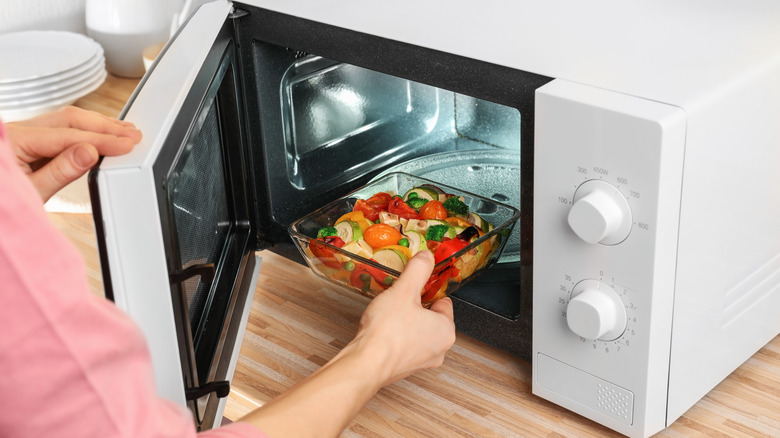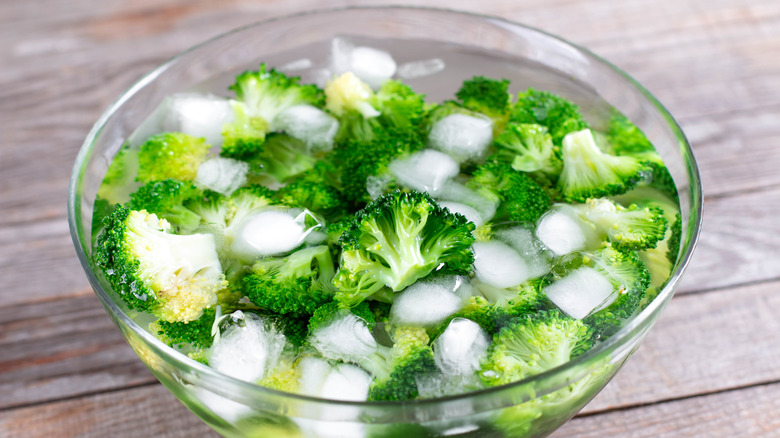Is It Possible To Blanch Vegetables In The Microwave?
We all know we should aim to get our daily dose of greens onto our dinner plates, but it seems only 10% of the population is incorporating enough vegetables in their diets. According to the CDC, the average adult should eat about 2 to 3 cups of veggies each day. However, many of us are falling short of that. Whether we attribute it to many vegetables' bitter flavor or our busy schedules, utilizing the cooking technique of blanching may help you eat more greens in a day.
Blanching is a cooking method that involves quickly cooking vegetables in boiling hot water, removing them, and placing them into an ice bath. This quick method is great for preserving the vegetables' color and texture, removing bitterness, and retaining their nutritional value, according to The Spruce Eats.
Blanching is a relatively quick method, however, for those in a rush who still want to be healthy, the thought of blanching vegetables in a microwave may have crossed your mind. All you have to do is place a single layer of vegetables on the bottom of a microwave-safe bowl, then cover them with about half a cup of water. They will cook in half the time it takes to blanch on the stove, and then the veggies can be tossed into an ice bath.
While using the microwave is certainly a time saver, it may not be the best method, and here's why.
The microwave method is not the best option
Microwave blanching is not an ideal way to cook your vegetables, according to The National Center for Home Food Preservation. The reason the traditional blanching method works, according to Nourishing Generations, is the process will denature certain enzymes in the veggies that give them a bitter taste, thus allowing for a better dining experience. It also stops enzyme activity that would allow for a loss of flavor, color, or texture. However, when taking a shortcut by blanching in the microwave, some enzymes may not be shut down, so the vegetables could diminish in quality.
However, low-quality vegetables are better than none. So, if this result doesn't bother you, and you still wish to stick to your microwave blanching method, just be sure to not overload your dish with vegetables. The National Center for Home Food Preservation says that working in "small quantities" is best and tailoring your cooking time to each vegetable's needs is essential.

